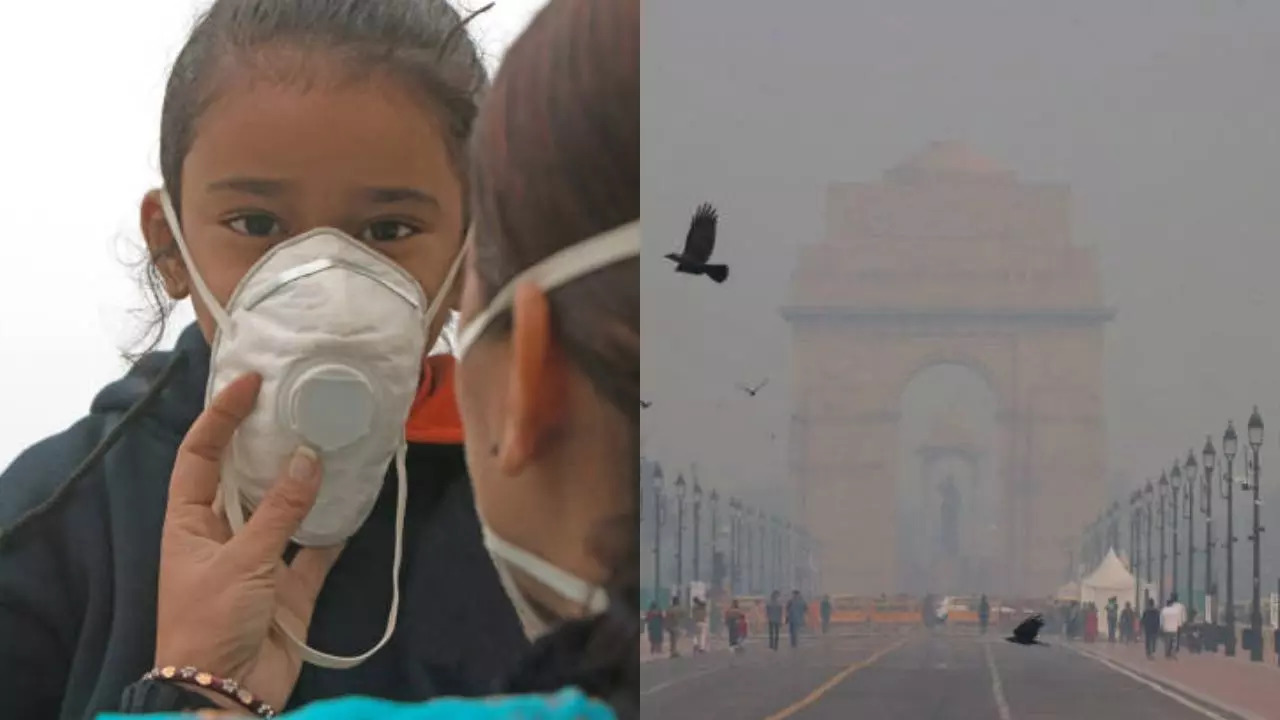
Delhi feels no less than a gas chamber right now. Post Diwali the air quality index of the national capital has worsened making it tough to breathe. The current AQI in Delhi is over 300 which comes under the ‘very poor’ category and has increased health problems including respiratory diseases, skin issues, heart problems, damaging immunity and irritation in eyes across all age groups.
However, there is a certain age group that is more at risk than anyone else — Children. Children are the most impacted by air pollution. This is because of many reasons including: - They breathe faster than adults and thus take in larger volumes of pollutants compared to their body weight.
- Secondly, toxins cause infections and diseases that hinder the normal development of the lungs in children, leading to various health problems. Children growing up in an area with polluted ambient air are prone to developing respiratory ailments like asthma and bronchitis and have impaired lung function due to recurring infections. Studies have shown that over 2.
2 million schoolchildren in Delhi have irreversible lung damage due to poor air quality. We got in touch with Dr Shreya Dubey, Consultant - Neonatology and Paediatrics, CK Birla Hospital Gurugram who shares that air pollution significantly affects lung development in children leading to long-term respiratory health issues. “Children are particularly vulnerable because their respiratory system is still in the developing stage and also they breathe at a faster rate which leads to the inhalation of more pollutants as compared to adults,” she said.
Chronic exposure to pollutants like particulate matter and nitrogen dioxide can enter the lungs resulting in diminished lung function. Studies have also shown that exposure to high levels of air pollution can reduce lung function development. Long-term exposure alleviates respiratory conditions such as asthma and COPD, in later life.
Air pollution is linked with increased Hospitalisation and mortality from asthma and COPD. Breathing Problems Caused Due To Air Pollution In ChildrenAsthma Pollution triggers asthma, a condition that inflames the airways and makes breathing difficult. Pollutants like ozone and particulate matter can increase asthma symptoms, leading to coughing, and wheezing, in children.
Chronic Bronchitis Long-term exposure to polluted air can cause chronic bronchitis, a condition where the bronchial tubes get inflamed. This leads to persistent cough, mucus production, and difficulty breathing in kids. COPD (Chronic Obstructive Pulmonary Disease) Although COPD is usually seen in adults, research shows that long-term exposure to air pollution in childhood can lead to early development of COPD-like symptoms, such as persistent cough, shortness of breath, and decreased lung function over time.
Reduced Lung Development Air pollution can hamper lung growth and development in children, leading to reduced lung function. Children growing up in areas with high pollution often have smaller, less efficient lungs, which can increase the risk of respiratory issues later in life. Respiratory Infections Polluted air weakens children’s immune responses, making them more prone to respiratory infections like pneumonia and bronchitis.
Fine particles in polluted air can carry pathogens deep into the lungs, leading to infections that can be frequent and severe. Allergic Rhinitis Airborne pollutants, including dust, pollen, and smoke, can trigger allergic rhinitis, causing sneezing, runny nose, and itchy eyes. This often worsens in polluted environments, and it can be uncomfortable and disruptive to a child’s life.
Get Latest News Live on Times Now along with Breaking News and Top Headlines from Health and around the world..














